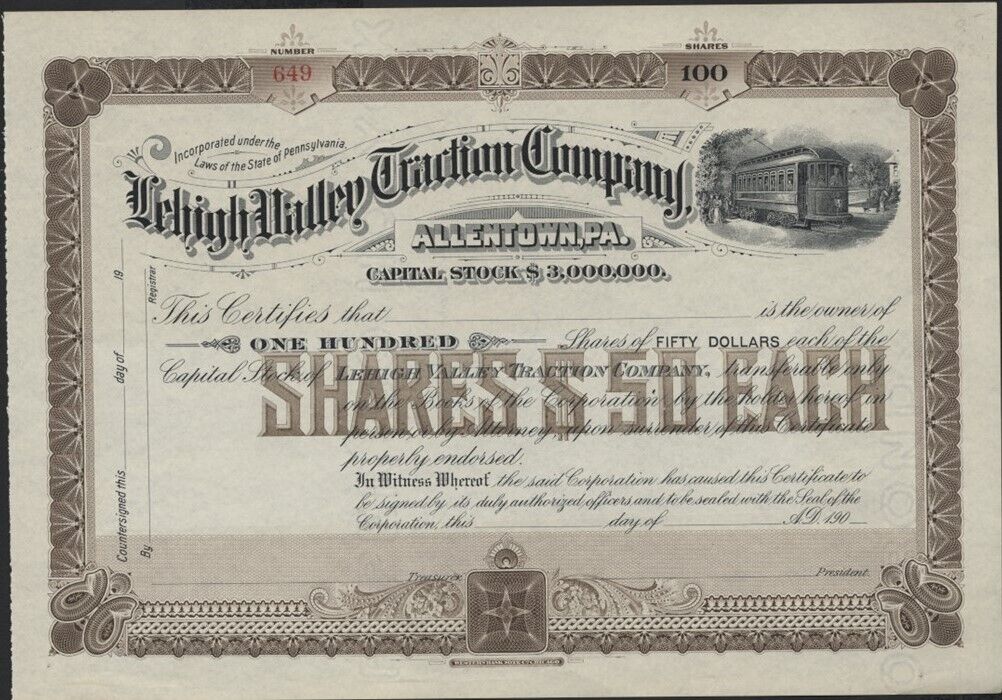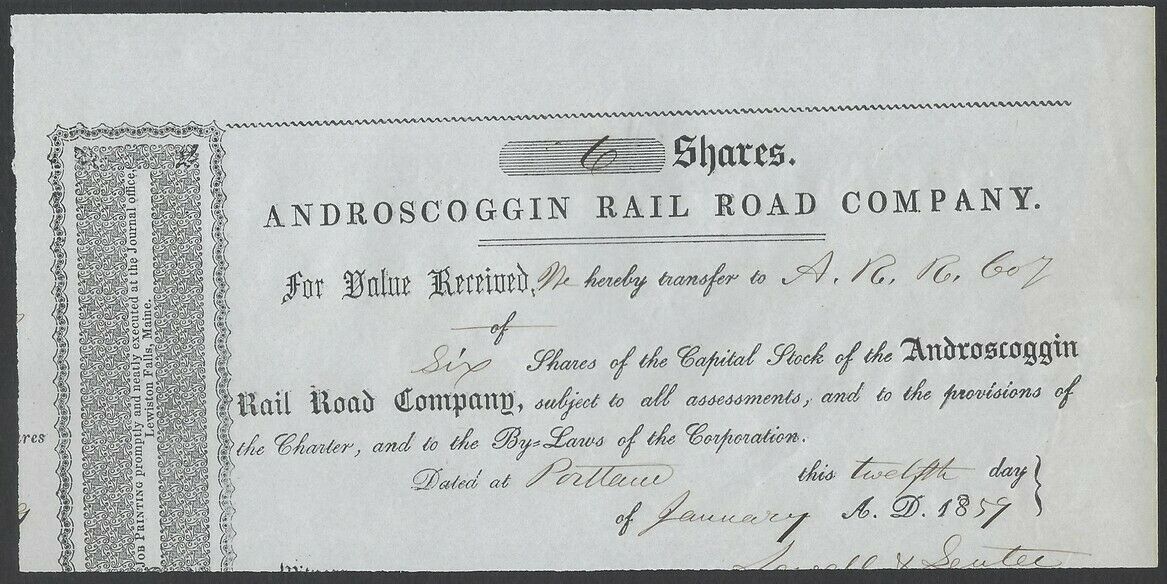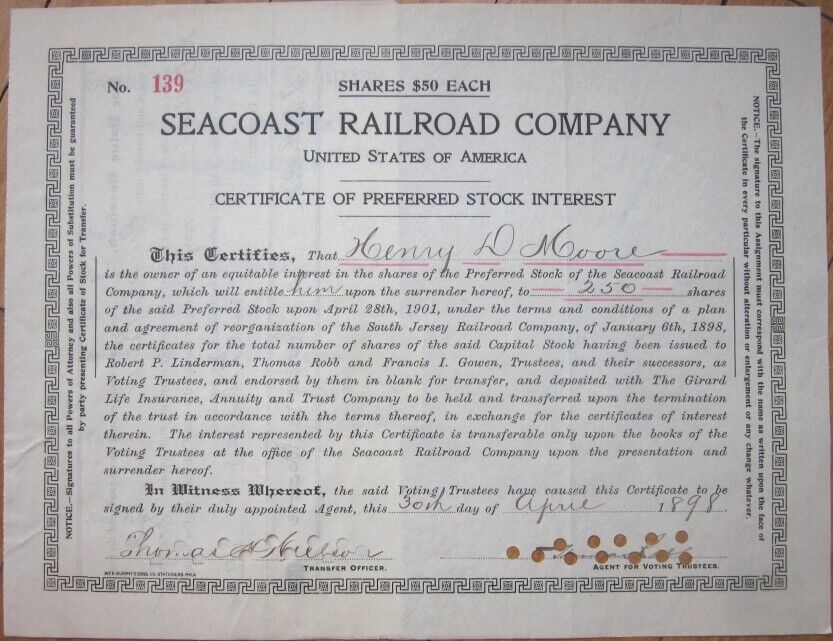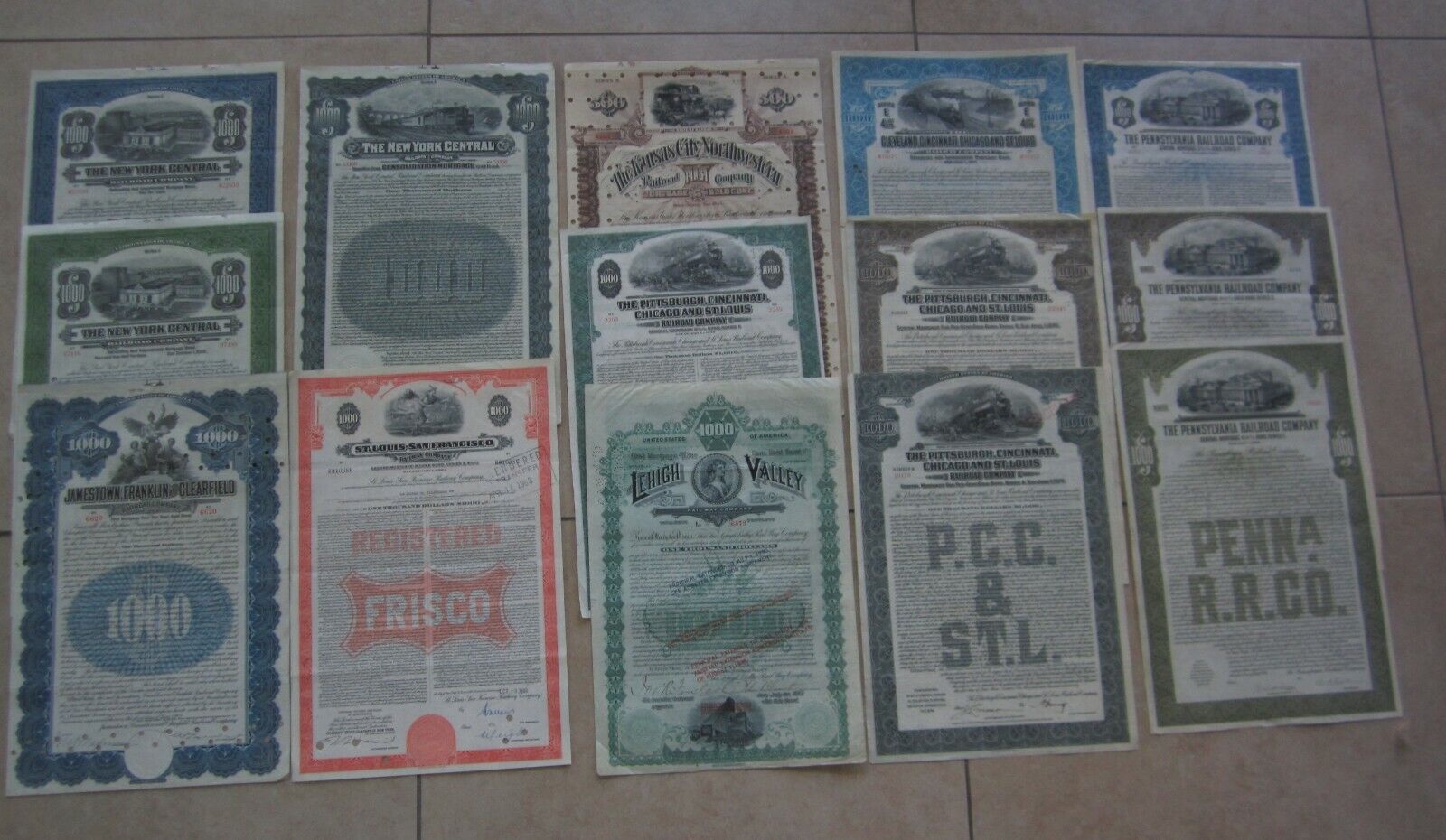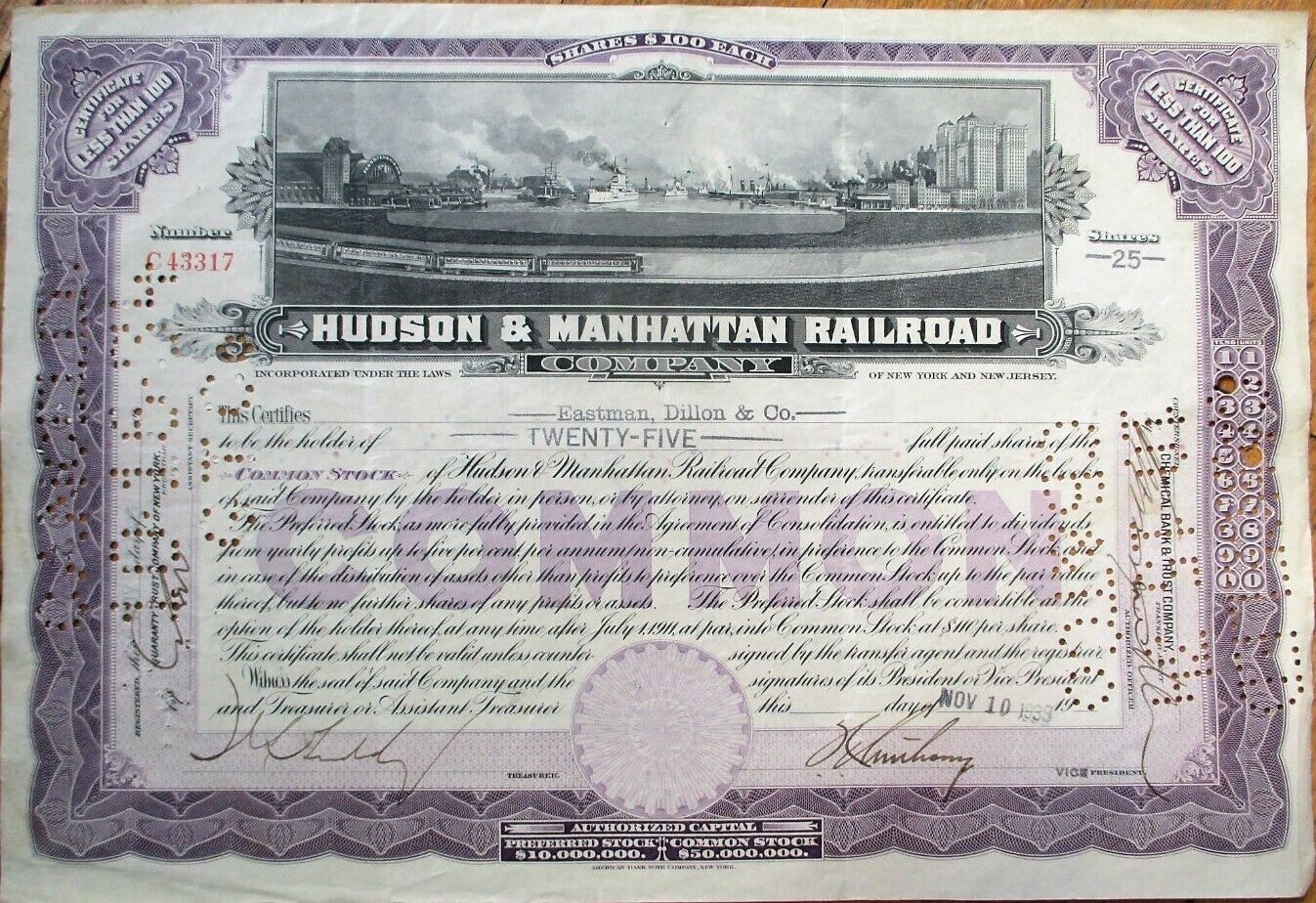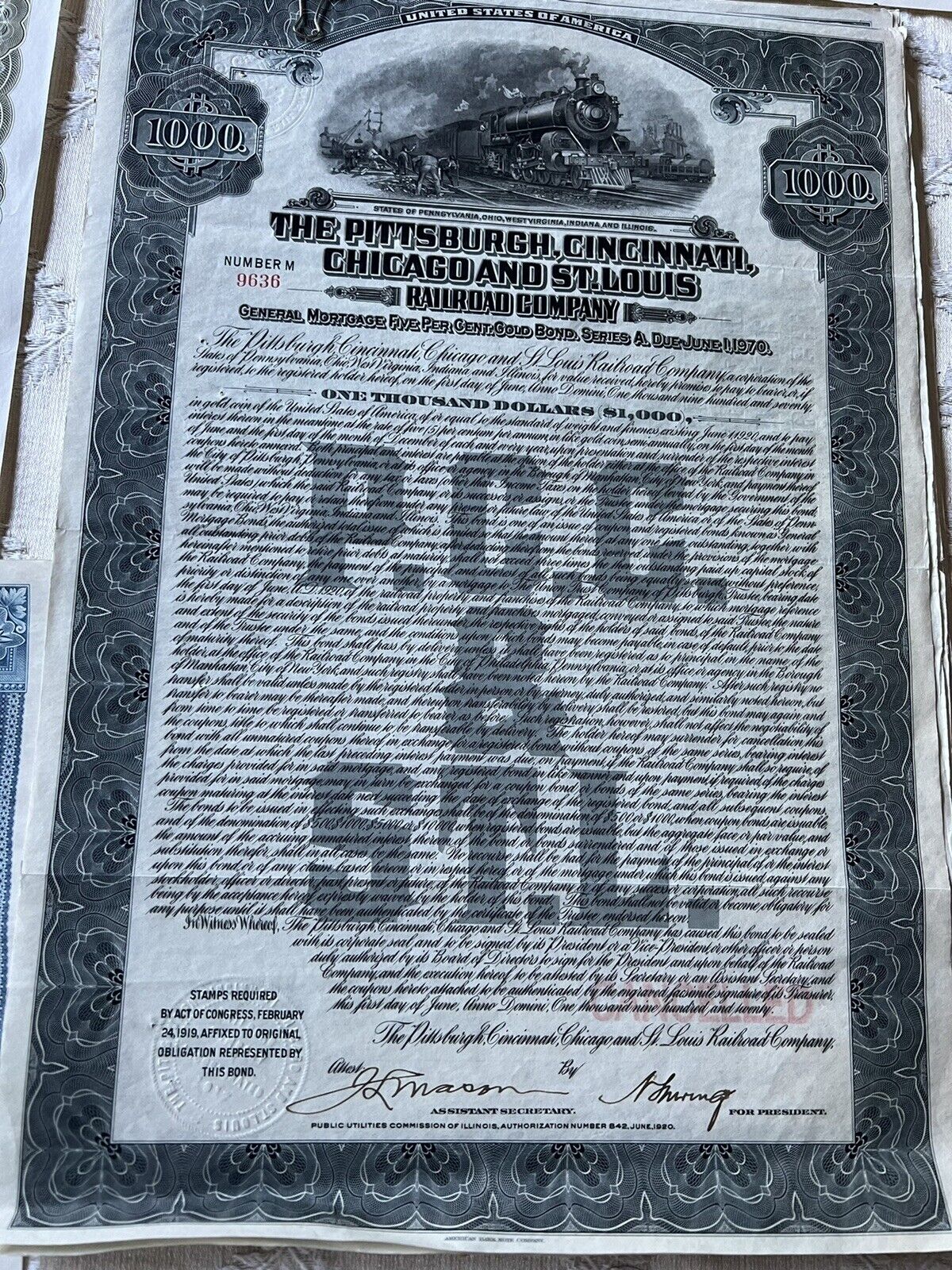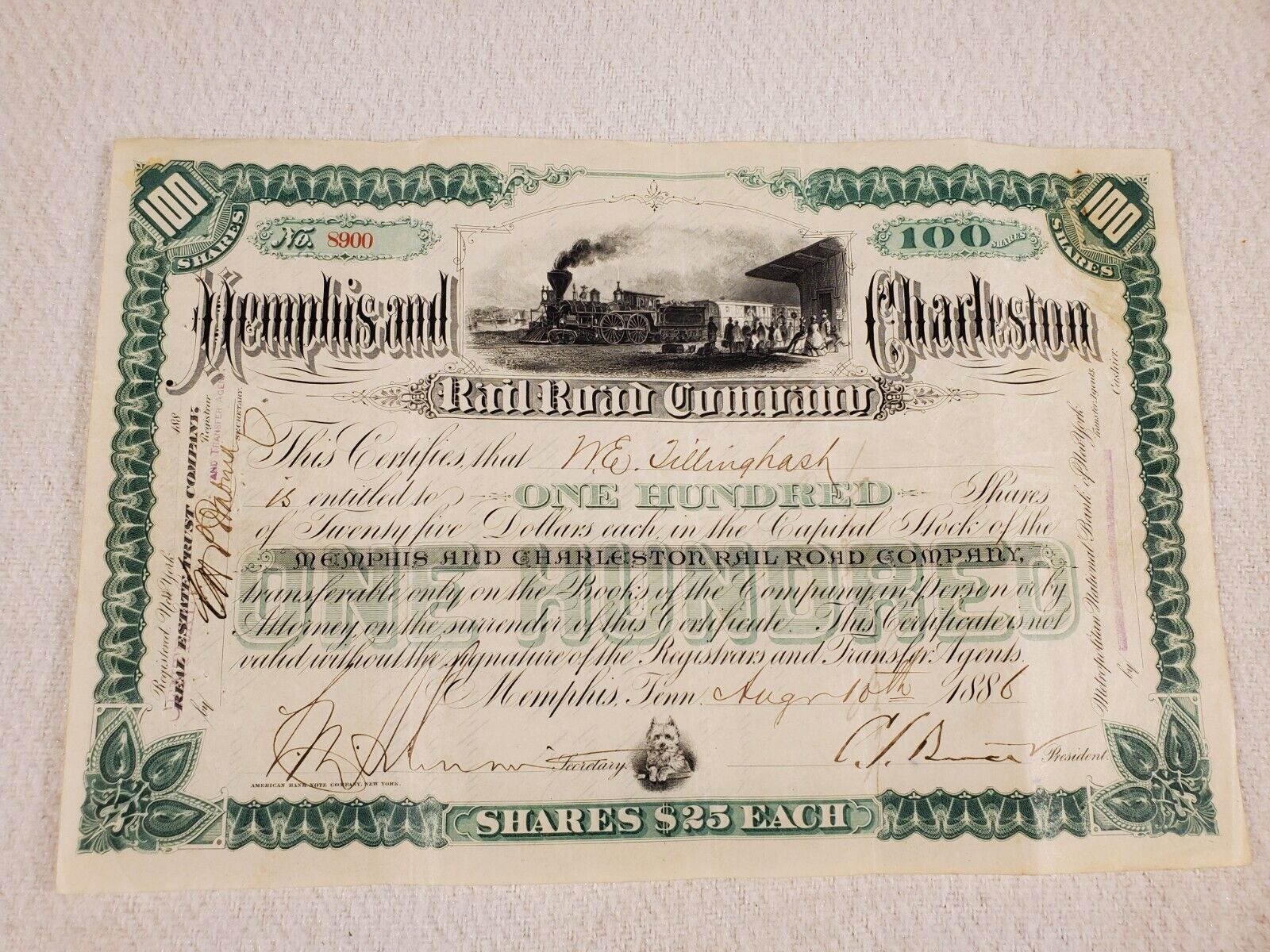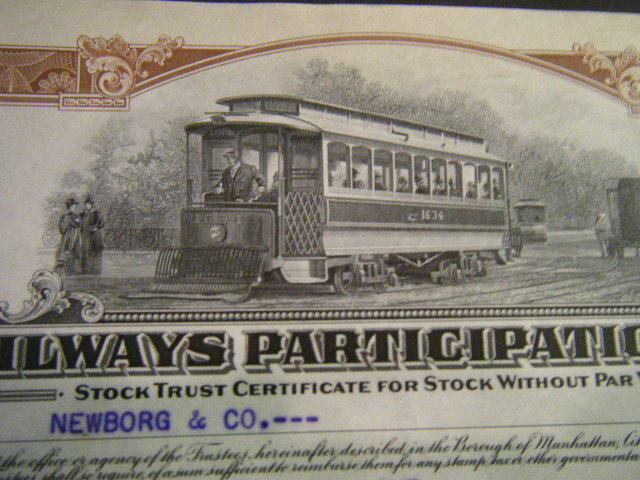-40%
United Railroads of San Francisco Stock Certificate
$ 4.22
- Description
- Size Guide
Description
Product DetailsBeautifully engraved antique stock certificate from the United Railroads of San Francisco dating back to the early 1900's. This document measures approximately 11 1/4" (w) by 10 1/2" (h).
Images
The images presented are representative of the piece(s) you will receive. When representative images are presented for one of our offerings, you will receive a certificate in similar condition as the one pictured; however dating, denomination, certificate number and issuance details may vary.
Historical Context
The franchise for what would become the Market Street Railway was granted in 1857 to Thomas Hayes. The line was the first horsecar line to open in San Francisco, opened on July 4, 1860, as the Market Street Railroad Company. A few years later, the line was converted to steam power utilizing steam dummy locomotives pulling a trailer car. Four Portland gauge tank locomotives were built by San Francisco's Albion Foundry. Locomotives #1 and #4 were 24 feet long with engine, baggage and passenger compartments driven by the front wheel only 0-2-2T. Locomotives #2 and #3 were 18-foot 0-4-0Ts with a baggage compartment. Both types pulled 40-foot double-truck trailers with seating for 64 passengers. Baldwin Locomotive Works built two 0-4-0T steam dummies (C/N 5004 & 5009) in 1880 to operate over the standard-gauge railway extension from Valencia Street to Castro Street until 1888.
Following the opening of the cable hauled Clay Street Hill Railroad in 1873, pressure grew to convert the city's horsecar lines to the new form of traction. In 1882, Leland Stanford and associates bought the Market Street Railroad Company and converted its lines to cable haulage. In the process, the company's name was changed to the Market Street Cable Railway Company. This company was to grow to become San Francisco's largest cable car operator. At its peak, it operated five lines all of which converged into Market Street to a common terminus at the Ferry Building; during rush hours a cable car left that terminus every 15 seconds.
However transit technology was still moving on, and the new electric streetcar quickly proved to cheaper to build and operate than the cable car, and capable of climbing all but San Francisco's steepest hills. In 1893, Stanford died and the company was taken over by the Southern Pacific Railroad. The company was again renamed to the Market Street Railway Company, and began the process of converting its lines to electric traction. In 1895 the company placed a newspaper advertisement in The San Francisco Examiner offering horse cars for ( without seats). Many of these became the basis for the impromptu community built from streetcars called Carville-by-the-Sea.
Conversion to electricity was resisted by opponents who objected to what they saw as ugly overhead lines on the major thoroughfares of the city center. At 5:12 am on April 18, 1906, those objections were swept away as the great San Francisco earthquake struck. The race to rebuild the city allowed the company to replace all but the steepest of its cable car lines with electric streetcar lines.
By this stage, the company had changed hands again, and become the United Railroads of San Francisco (URR). Over the years many independent lines had been absorbed, including the Clay Street Hill Railroad, the San Francisco and San Mateo Electric Railway, the Presidio & Ferries Railway, and the Ferries and Cliff House Railway. Ironically the earthquake that brought so many benefits to the company also sowed the seeds of its demise, as the independent Geary Street, Park & Ocean Railway was acquired by the city and became in 1912 the beginning of the San Francisco Municipal Railway (Muni). Horsecars were finally withdrawn from city streets on June 3, 1914. By 1918, and assisted by the construction of several tunnels under the city's hills, Muni was in direct competition with the URR down the length of Market Street. The two operators each operated their own pair of rail tracks down that thoroughfare, which came to be known as the 'roar of the four'. The two Market Street Railway tracks were on the inside and the two San Francisco Municipal Railway tracks were on the outside.
Competition, labor troubles and a bad accident in 1918 led to the reorganisation of the URR, to re-emerge again as the Market Street Railway Company. This continued to operate electric streetcars throughout the city, the Powell St. cable car lines, and a growing fleet of buses. But relations were not good with the city, who controlled their franchises, and on May 16, 1944, after defeating the proposal six times previously, voters elected to purchase the operative properties of the Market Street Railway for .5 million and the company sold all its assets and operations to Muni.

